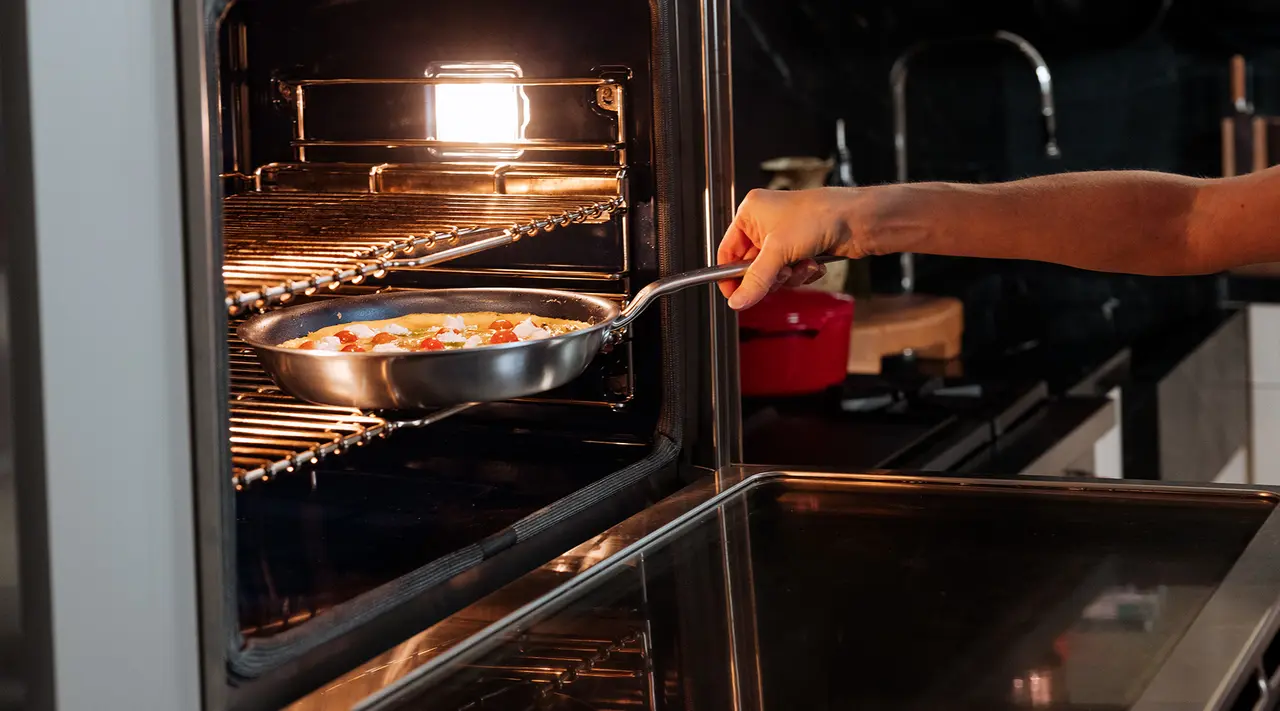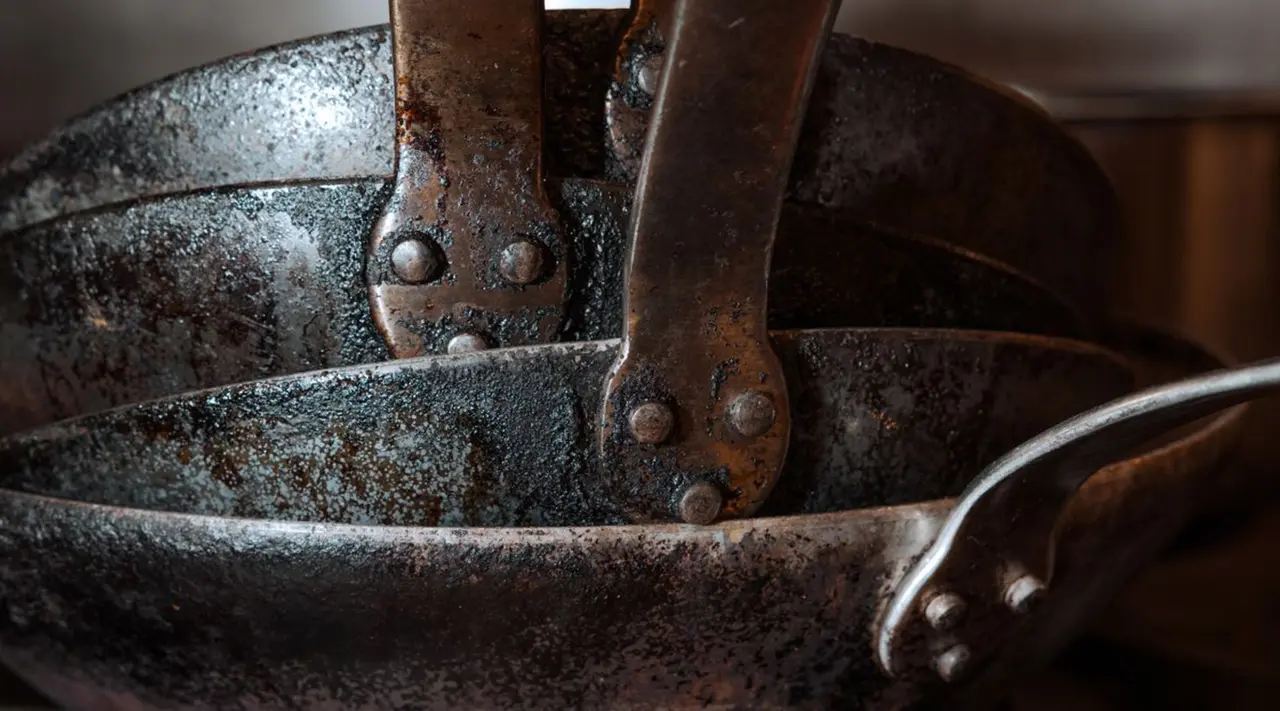Having at least one pan that you can turn to for anything, from high-heat cooking to oven-finishing, is essential for home and professional cooks alike. The more pans you can count on, the better, especially when it comes to having an oven-safe skillet.
Unfortunately, finding a pan that can do it all can sometimes feel impossible. Read on to find out more about why pans that can go in the oven are essential pieces in any kitchen, along with which types of oven-safe pans we recommend.
What Is an Oven-Safe Pan?

Much like its name suggests, an oven-safe pan is one that can be used in the oven as well as on the stovetop. This is advantageous for recipes that start on the stovetop and finish in the oven, like Dutch babies, searing or reverse searing, or even just for keeping a dish warm while preparing the rest of the meal.
Most manufacturers are very upfront about whether or not cookware is oven-safe, and usually denote with a symbol on the pan or care instructions. Be sure to pay attention to the heat maximums a pan can endure—this is often listed in the product specifications or care guidelines.
Another aspect of oven safety to be aware of is that most cookware materials are oven-safe by themselves, but some features of pans—like plastic or wooden handles—render the pan unsuitable for use in the oven.
What Are the Best Oven-Safe Cookware Materials?

There are a few types of cookware materials that are the best suited for oven cooking, due to their heat conductivity and ability to be used at high temperatures. Here are some of our picks for the best oven-safe pans.
1. Carbon Steel
The pan with the highest heat tolerance tops our list for obvious reasons. Carbon steel frying pans are oven-safe up to 1200F, lightweight, boast incredible heat retention, and are lightweight enough to maneuver around the stovetop, in and out of the oven, or even over an open flame.
2. Stainless Steel
Stainless steel is another excellent oven-safe option. Our Stainless Clad Frying Pan is oven-safe up to 800F, making it the perfect choice for oven-finishing a sauce or keeping a meal warm. Our entire Stainless Clad collection (including Non Stick) also features our proprietary Stay-Cool Handle, making it easy to transport in and out of the oven without burning your hand—but please still use a dishcloth, oven mitt, or pot holder when transferring out of the oven.
3. Cast Iron
Cast Iron is also a highly effective pan for oven usage, as it can handle temperatures up to 600F. However, note that these pans are quite heavy—and with food in them, maneuvering out of the oven may be difficult. Use two hands to be safe, or place the skillet on a sheet pan for easier maneuvering.
4. Non Stick
Not all non stick cookware is created equal—and never has that been underlined more than in its oven safety. Some non stick frying pans aren’t able to be used in the oven due to the chemicals used to produce the non-stick surface, which could release and leach into the food or air if exposed to high temperatures.
Luckily, our Non Stick Cookware is oven-safe up to 500F and is made with a professional-grade non stick coating over our Stainless Clad base (complete with Stay Cool Handle), so you can oven-finish without worrying about what’s ending up in your food.
What Cookware Is Not Oven Safe?
Now that you have your list of guaranteed oven-safe pans, it’s equally important to know what pans you shouldn't put in the oven.
1. Some Ceramic
Ceramic cookware has been having a profound moment on social media, and with an array of eye-catching colors to choose from and promises to replace other pieces of cookware, it’s not hard to see why. However, one piece of cookware these cannot replace is any oven-safe pan you already own, as some ceramic cookware cannot be used in the oven.
This is due to the coating used on many ceramic pans, which is what gives it a chemical-free non-stick surface. This coating cannot be exposed to high temperatures, which is also why the maintenance instructions for many ceramic pans include temperature limitations of medium-low.
2. Plastic
Any pans that utilize plastic handles or lids cannot be used in the oven, full stop—even if the body is constructed of an oven-safe material like stainless steel. To avoid having to scrape melted plastic out of your oven, double-check your pan to make sure it doesn’t utilize plastic in any part of its construction before popping it in the oven.
Tips When Using Oven Safe Cookware

There are a few extra steps you can take when using oven-safe cookware to ensure not only your own safety, but the safety of your cookware and food.
Use Heat-Safe Utensils
If you’re stirring your ingredients in the oven or right after removing, be sure you’re using heat-safe silicone, nylon, or wooden tools—the last thing you want is to melt your utensils into your almost-complete meal.
Be Cautious of High Temperatures
Even if your pan features a stay-cool handle, you should be using heat protection and being careful whenever handling a pan and food in or directly out of the oven.
Let it Cool
After removing your pan and food from the oven, be sure to let both cool before eating or placing on your table, even when using trivets. Hot pans can scorch surfaces as well as skin, so use caution after removing your pan from the oven.
Ready to Cook?
Once you’ve figured out if your pan is oven-safe, your options of what you can cook are truly endless. Just be sure to confirm the maximum temperature your pan is oven-safe to, and get cooking.


































